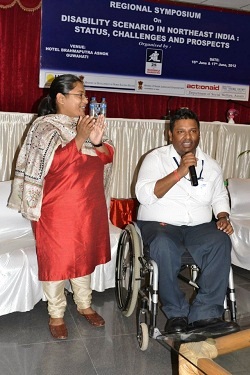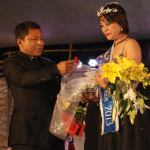A Sahib's Daughter, a fictional work written by Nina Harkness is very interesting for exploring as its motif the tea 'culture' in the Dooars in North Bengal, Darjeeling and Assam near Jorhat. Today, as we talk glibly of post modernist fiction, or post colonial fiction, this work shows an acumen related to pre independence and then to post independence of a variant culture once British and gradually becoming Indian or 'Anglo Indian'.
The novel straddles three decades roughly 1946 to 1979, In between locales flourish variously, Darjeeling, the Dooars, the UK, Northern Ireland and Upper Assam. Each chapter is connoted by dates which is a historical marker of historical time --- pre-independence, post independence, and the Northern Ireland crisis of separatism. The central characters float in such a consciousness of time-space medley. The novel begins with an introduction of a character Prava of Sikkimese origin who has an illegitimate child, Ramona, who falls madly in love with a tea planter Charles and the resultant progeny are the pretty Samira and the boy, Mark. After describing the life in tea gardens in the Dooars, with its club life and animated cacaphony the stage veers to Northern Ireland where Justin is introduced.
Like Samira's father Charles Justin is also consumed by a desire to work in India, and after working as a mechanic he arrives finally in a tea estate in Upper Assam as an Assistant Manager. He brings his fiancee turned wife Lorraine to India, and Lorraine who has done extensive 'research' on the tea culture adapts suitably to the new place, but not without goose bumps and the initial 'culture shock'. However she meets a tragic death, as she slips and falls in the mighty Brahmaputra. Her death disturbs the conscience ridden Irish Justin so badly that he wants change and at the Company's behest takes a transfer to the Dooars. In the meantime, Samira is in love with a handsome Punjabi Ravi, who initially reciprocates to the love, but gradually capitulates to his parents' wishes for an 'arranged marriage'. He breaks the news to Samira, who is inconsolable but gradually accepts it. In the meantime Justin woos Samira, and she accepts his hand. After that follows a series of episodes: Samira is pregnant, but the child is Ravi's and incidentally Justin is impotent. Ravi's' arranged marriage' does not take place as Radhika shows a pronounced disinterest. The engagement is broken off and Samira and Ravi are once again united in New Delhi. Justin who did not confide to Samira about his impotence has to suffer the news that the child is not his. Gradually their relationship dissipates. The novel ends with Prava meeting Samira's 'father' with Samira of course not knowing it.







































